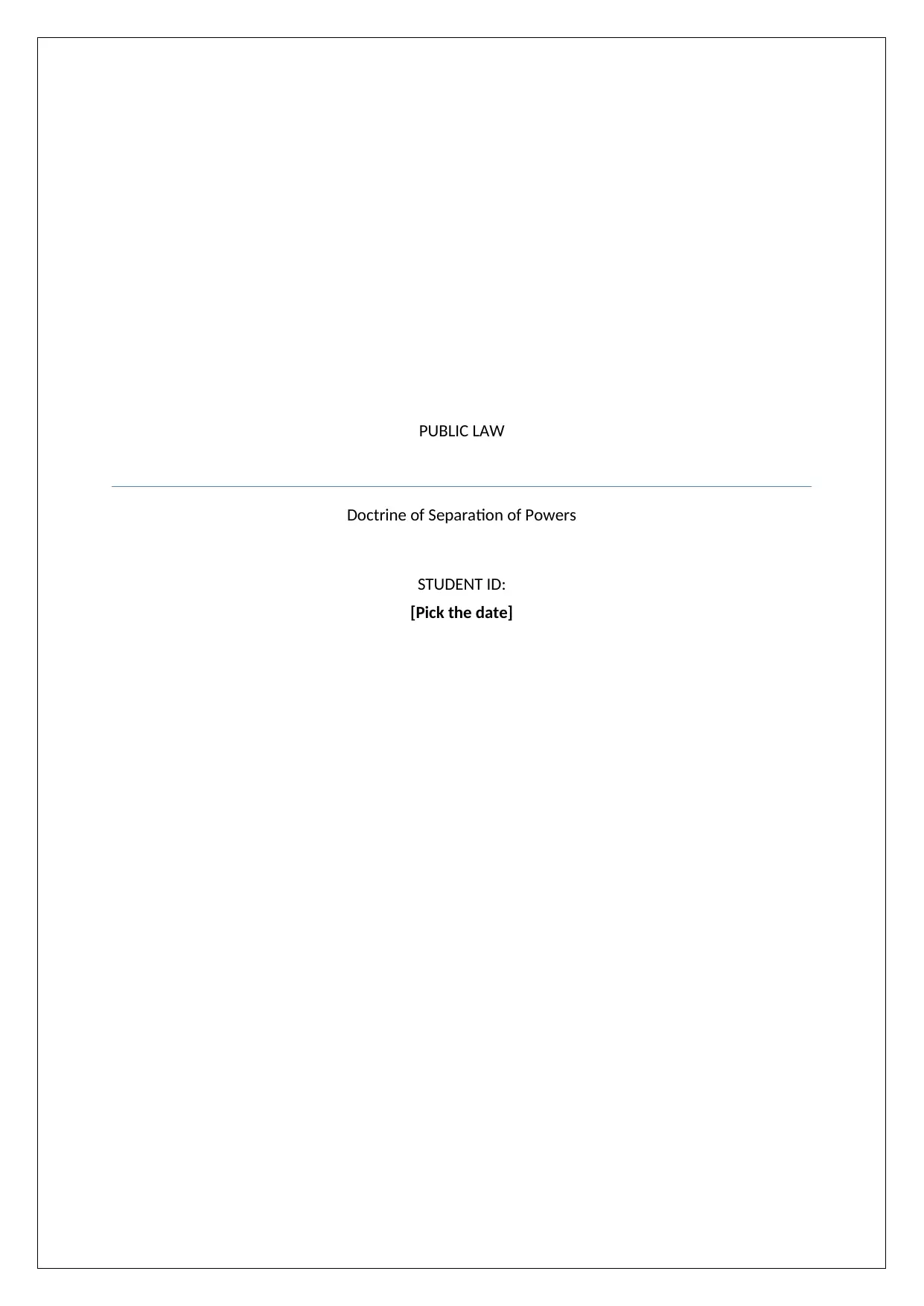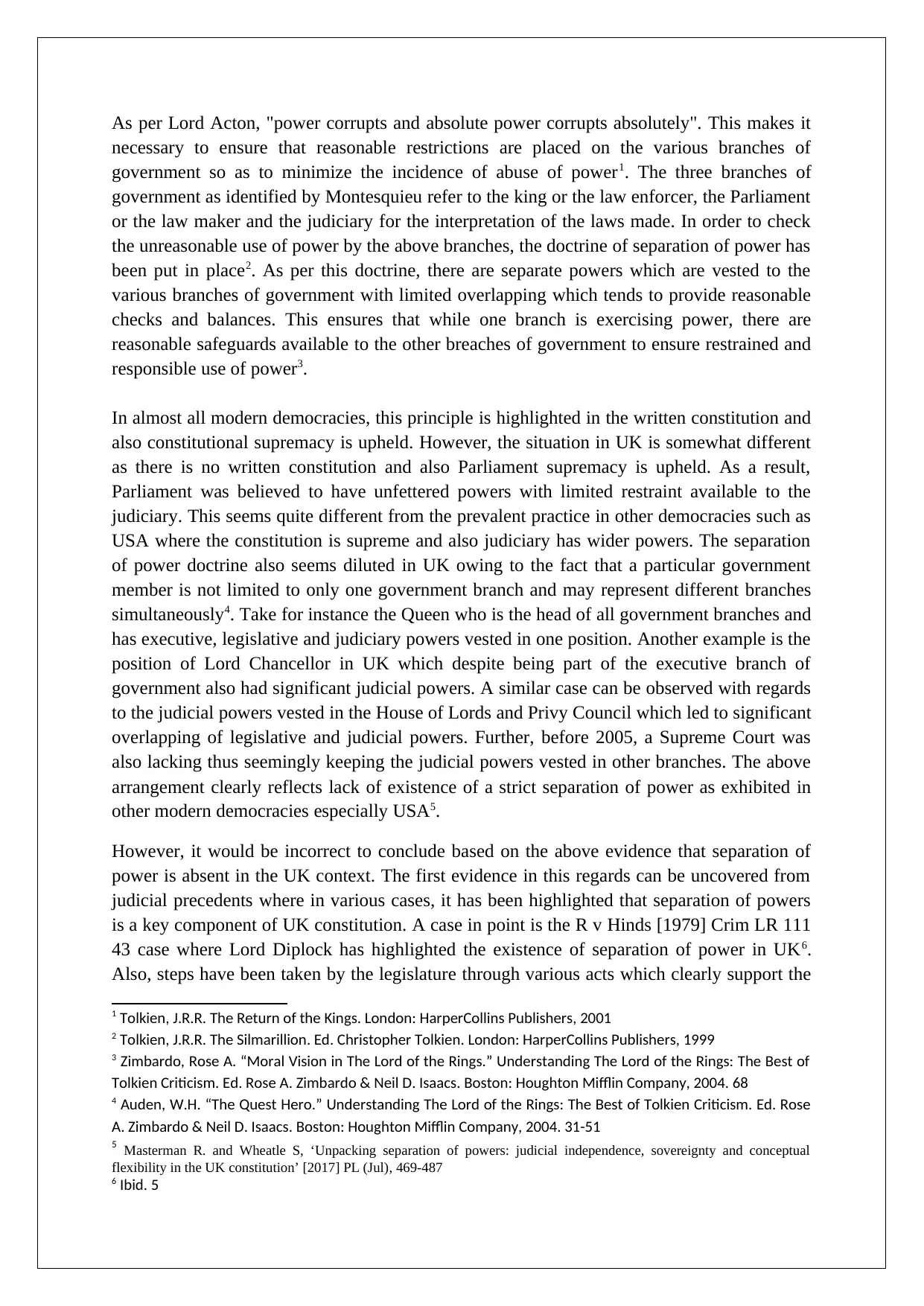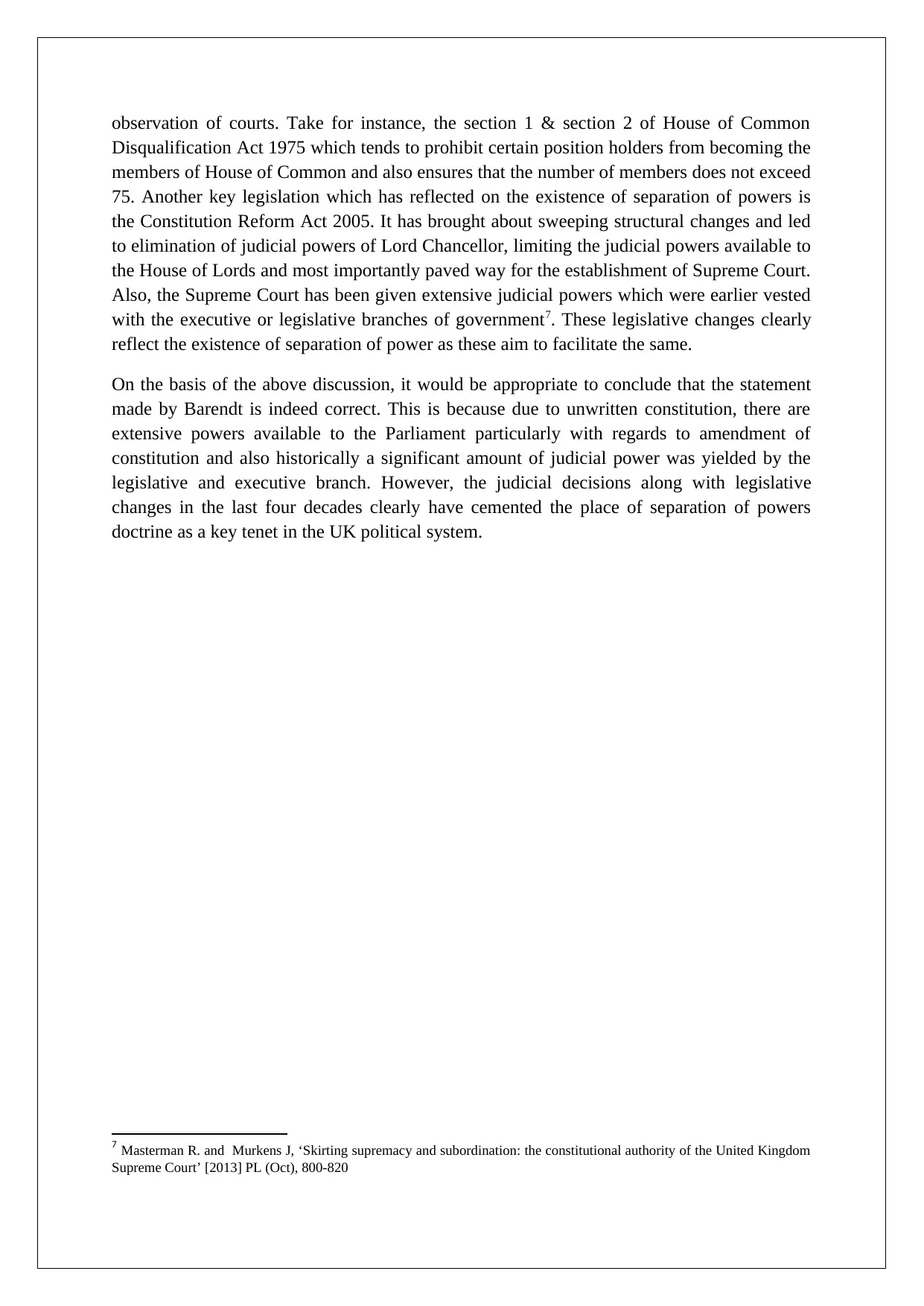Analysis of the Doctrine of Separation of Powers in UK Public Law
VerifiedAdded on 2021/04/17
|3
|785
|49
Essay
AI Summary
This essay analyzes the doctrine of separation of powers within the framework of UK public law. It begins by introducing the doctrine as a means to prevent the abuse of power by governmental branches, referencing Montesquieu's identification of the legislative, executive, and judicial branches. The essay then explores how the doctrine is applied in the UK, contrasting it with the systems in countries like the USA. It notes the historical context of the UK's unwritten constitution and parliamentary supremacy, highlighting instances where the separation of powers appears diluted, such as the Queen's role and the Lord Chancellor's position. Despite these apparent overlaps, the essay argues that the separation of powers is indeed a key tenet of the UK political system, supported by judicial precedents and legislative actions like the House of Common Disqualification Act 1975 and the Constitution Reform Act 2005. These changes have led to the establishment of the Supreme Court and a clearer delineation of powers, solidifying the doctrine's place in UK law. The essay concludes by affirming the importance of separation of powers in the UK context, given the historical power of Parliament and the evolution of judicial and legislative practices.
1 out of 3










![[object Object]](/_next/static/media/star-bottom.7253800d.svg)